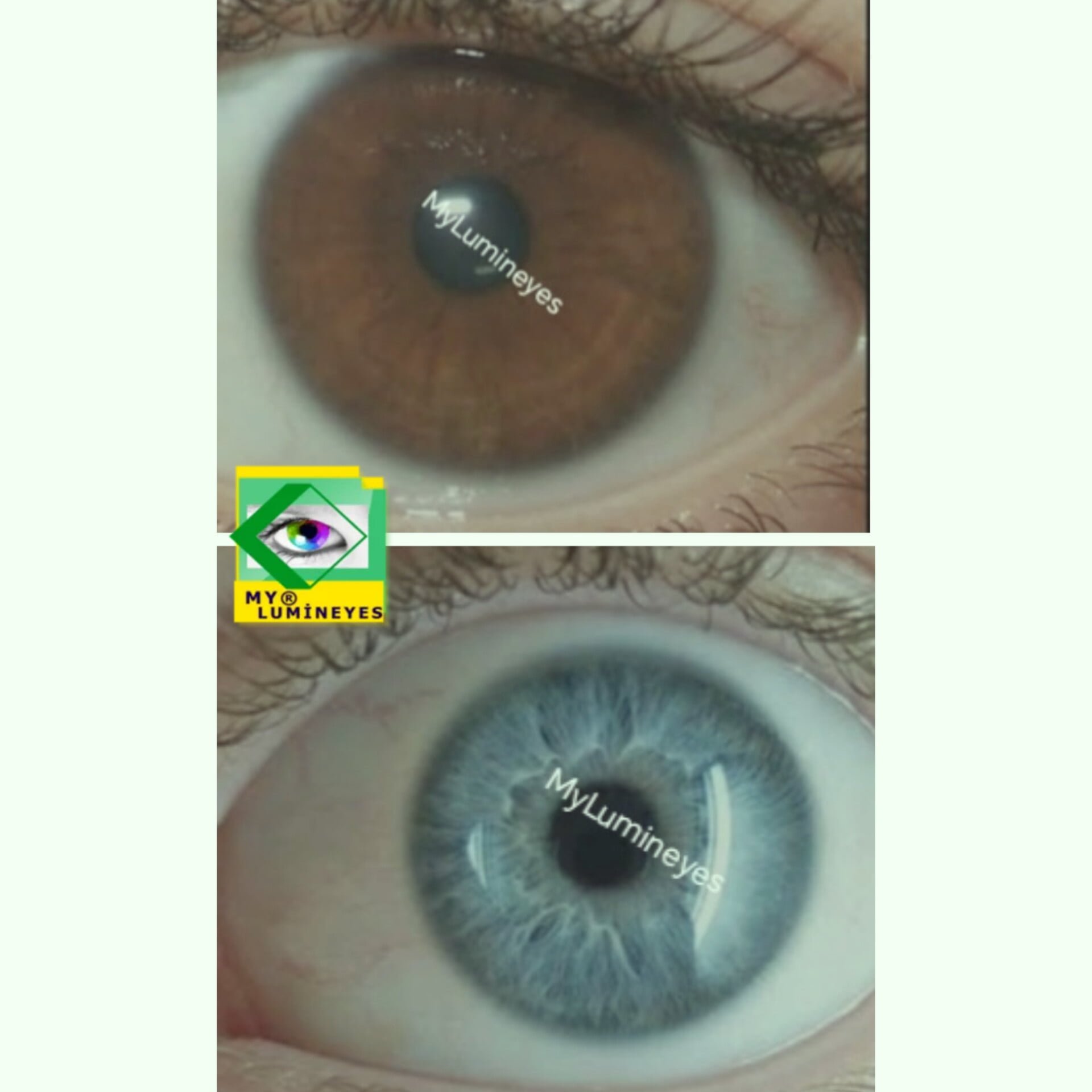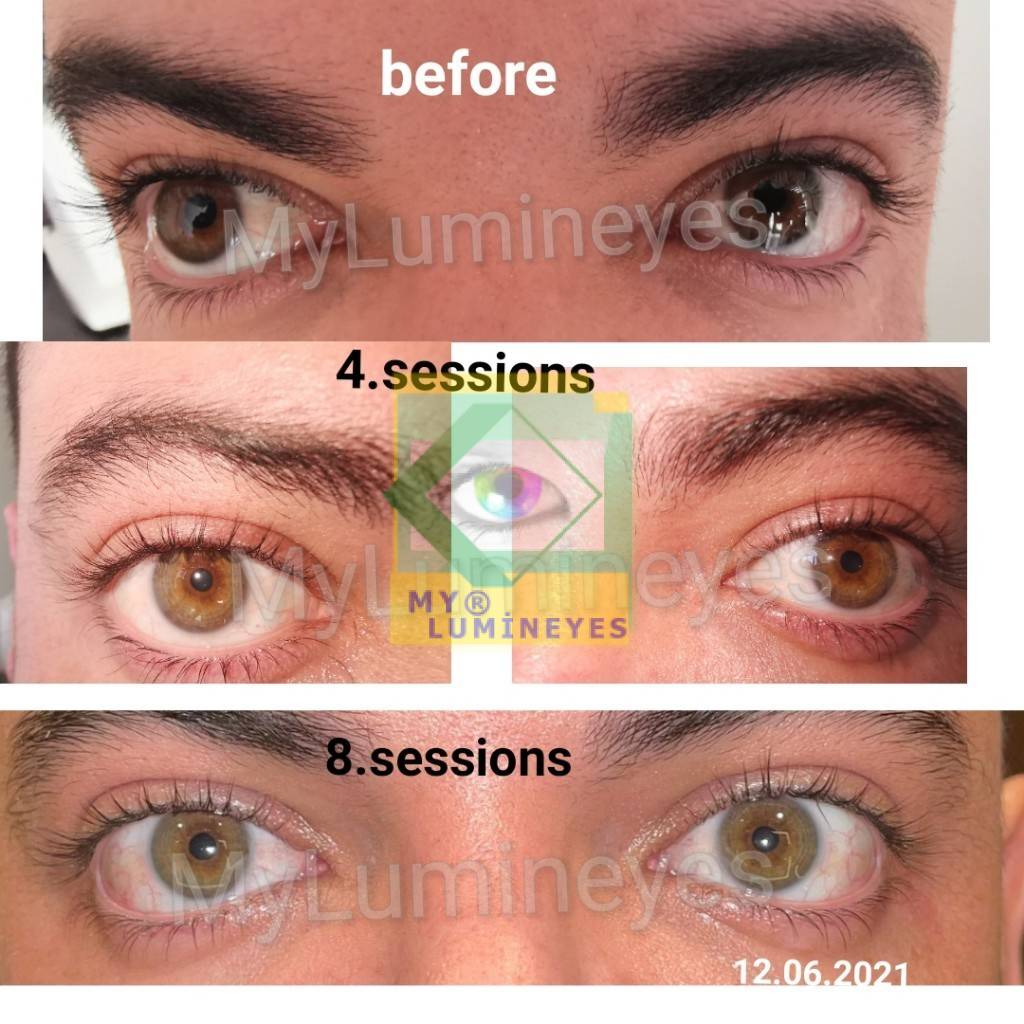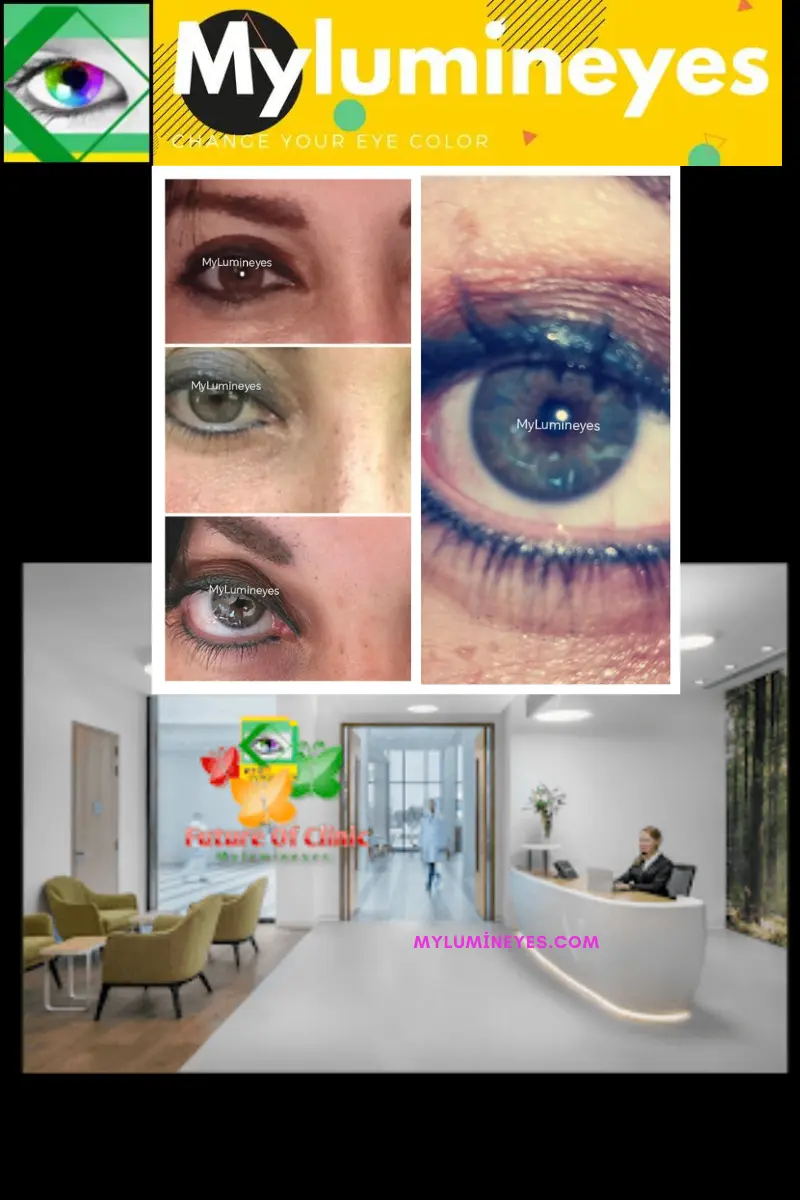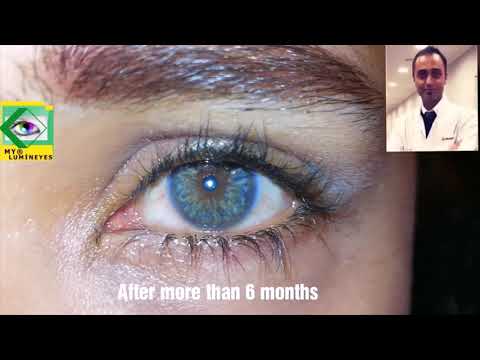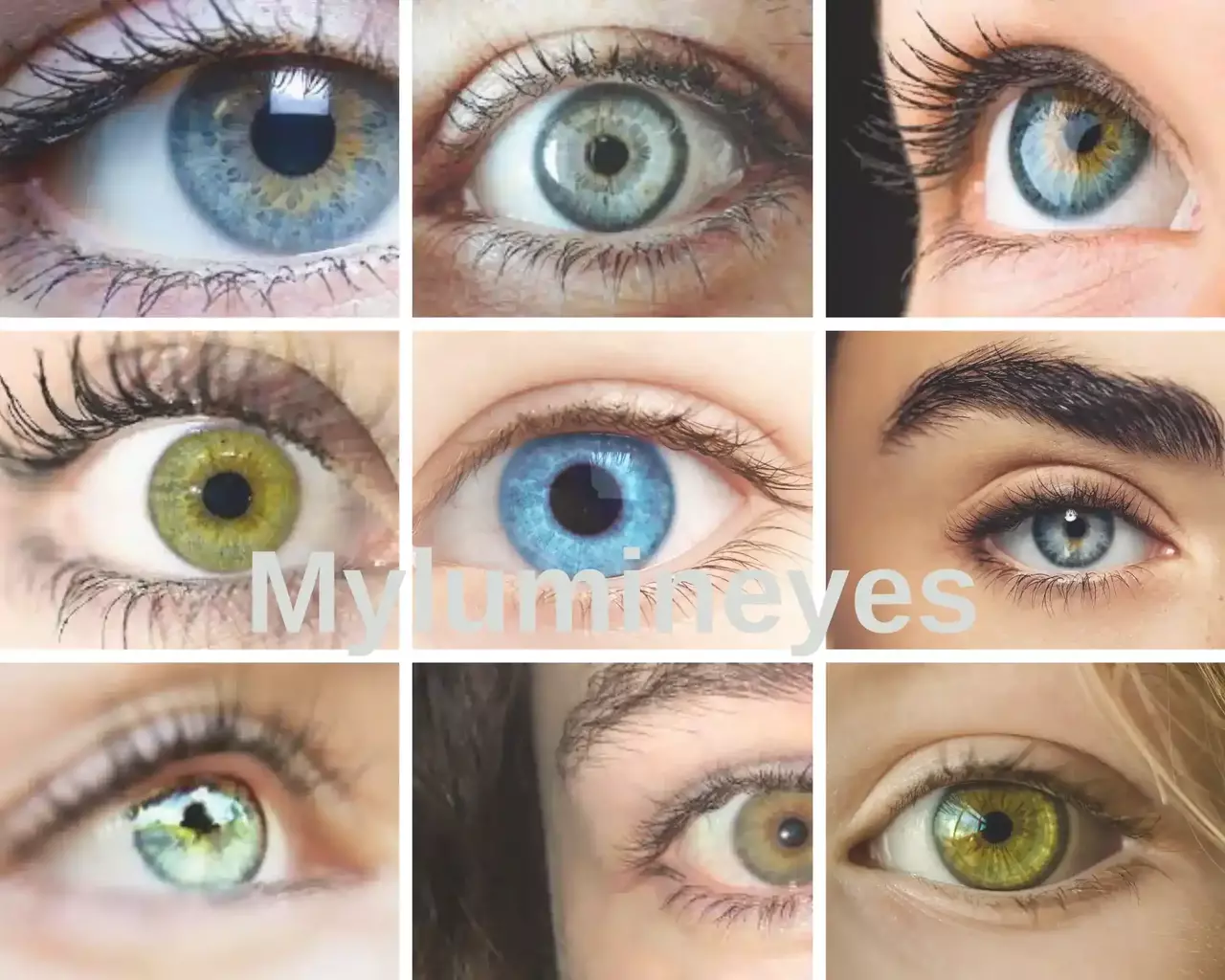How do vision-eyesight and color perception develop?
Vision is the cognitive process in which the visual organs and the brain collaborate to utilize the reflection of light from the surrounding environment, enabling the capacity to see and comprehend visual stimuli. In the transparent layer, the rays reflected from the light source or objects are refracted. The substance enters the eye through the pupil. It penetrates the eye’s lens and lands on the retina. An inverted picture is created on the yellow stain of the retina. The light rays reflected from the objects first arrive at the layer of transparency.
The beam is diffracted by the layer of transparency and goes through the pupil. The rays traveling from the pupil to the lens of the eye undergo a second refractive process and pass across the vitreous body.
The rays emanating from the vitreous body and striking the retina produce an inverted picture of the yellow stain.
When light strikes the retina, a photo-sensitive part of tissue at the rear of the eye, photoreceptors convert them into impulses of electricity. The retinal impulses are transmitted to the brain through the optic nerve. The brain then transforms the electrical impulses into the visual stimuli that you perceive. The eye, our visual organ, necessitates light in order to carry out its duty. Vision is not possible in dim or poorly lit environments. Vision is dependent on the reflection of light from the surrounding environment, which then enters our eyes.
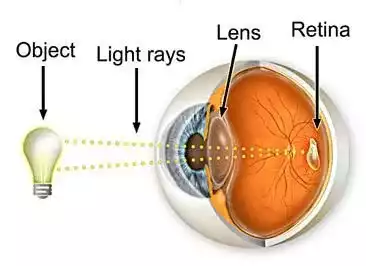
What is the mechanism behind seeing and how does eyesight function?
The retina, located in the back of the eye, contains millions of light-sensitive nerve cells. Retinal nerve cells are activated by light, resulting in the generation of unique visual signals. The optic nerve, consisting of many nerve fibers, conveys these impulses to the occipital lobe, where visual information is interpreted and analyzed in the brain.
Light is normally refracted first by the cornea, then by the intraocular lens, and finally focused on the retina at the rear of the eye to form a clear picture. If the eye cannot properly refract light, vision becomes blurry.
The eye, the organ responsible for seeing, is composed of several layers. The signals gathered by the eye from the environment are sent to the brain. After the action of a number of systems, the visual formed by impulses conveyed to the brain becomes a picture.
How Does Sight Happen?
To be viewed and observed by the eye, an item must either be a light source or be lighted by light. When gazing at an item, the light reflected from the object strikes the transparent layer of the eye and is also refracted.
On the other hand, light rays bent by the transparent layer reach the pupil.
Receivers at this location detect the detected image. Optic nerves transmit the perceived image to the visual cortex of the brain. The brain perceives the inverted image as upright. In this way, vision occurs.
Tips for healthy eyes
To prevent vision loss, you should not watch television at close range for a long time, read a book without holding the book very close, and avoid looking directly at bright light. Thus, you can protect your eye health.
There are many regions for vision event in the eye
- During the visual event, the light rays reflected from the objects first reach the cornea, and from there they are collected in the pupil.
- After passing through the pupil, the light reaches the lens.
- Light rays undergo a second round of refraction in the lens before passing through the vitreous body and striking the yellow stain on the retina. In the yellow area, the picture is inverted.
- The sensory receptors in the yellow spot sense the reverse picture created in the brain, and the brain and nerves are transported to the visual center.
- In the visual center of the brain, the inverted picture is perceived correctly, resulting in the occurrence of the vision event.
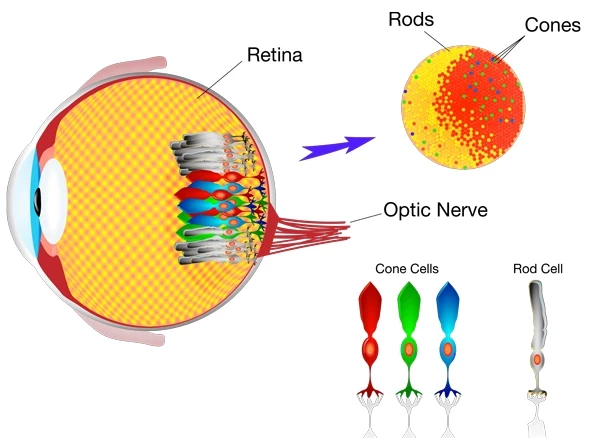
How does the human eye see colors?
We perceive as “heat” electromagnetic radiation with shorter wavelengths and higher frequencies. Human vision is limited to wavelengths between 700 and 400 nanometers (millimicrons). Between 700-600 of this is red; between 600-500 is green; and between 500-400 is blue.
With the sensors at the back of our eyes, it is possible for us to see colors. These translate the optical information received by the brain into electrical impulses. Neurologists refer to these cells as photoreceptors. There are several varieties of photoreceptor, and humans normally have three of them. They are sensitive to blue, green, and red, and other colors are interpreted by integrating the information they get from these three hues. The majority of color blindness males experience difficulties with the green receptor. Therefore, individuals have difficulty distinguishing different tints of green.
The human eye is particularly sensitive to and capable of distinguishing various colors of green.
How do colors appear on objects?
If an item reflects 100% of the white light that strikes it, it will seem white. However, if it does not reflect any white light that falls upon it, it looks black. For example, if an object absorbs blue and green light while reflecting red, it will appear red.
Does having colored eyes constitute a disease?
Scientists have established that a deficiency in the genes that build up the optic nerves is responsible for colorful eyes. Eye color variations are caused by slight mistakes in single-nucleotide polymorphisms, according to an Australian study of more than 4,000 individuals (SNPs).
Where does the gene for eye color originate?
The recessive or dominant genes inherited from the mother and father influence these traits. Consequently, the genes of the parents also impact the eye color of infants. If no one in earlier generations has light-colored eyes and both the mother and father have brown eyes, the child will also have brown eyes.
What time does a baby’s eye color change?
Most likely, your child’s eyes will change the most between the ages of 3 and 6 months. The eye will have picked up enough pigment by then, making it possible to make a more accurate guess about the final color.
However, your child’s eye color may still include some surprises. Your baby’s eye color may continue to change owing to pigmentation of the iris until the baby’s first birthday, and you may continue to see modest eye color changes (such as green eyes gradually becoming hazel or hazel eyes deepening into brown) until she is 3 years old.There is no reason to think that brown eyes will turn blue. The dark eyes of most babies stay dark.
One more important thing is that people have different eye colors because their genes are not all the same. There are a lot of genes that affect eye color that make melanin pigment, move it around, or store it. The amount of melanin in the front layers of the iris determines the color of the eye. How the melanin pigments are spread out in the eye and the amount of eumelanin to pheomelanin all affect the color of the iris. Eye color falls into nine groups, and up to sixteen genes have been linked to how eye color is passed down.
Why do some people have colored eyes?
The more pigment the choroid has, the darker the eye will become; conversely, the less pigment it contains, the lighter the eye will become.
Can my eyes change color?
It is possible to change your eye color. Through iris implants, keratopigmentation, and laser eye color change, it is possible to make permanent changes to the color of the eyes. It is a truth that Lumineyes is the safest and most natural laser eye color change technique available. Changes in eye color may be both appealing and unsettling. By knowing the causes of eye color changes, you can evaluate whether what you’re experiencing is normal or if you should see an ophthalmologist.
This article examines common Reasons For Eye Color Changes
Age-Related, Natural Eye Color Changing
Children are susceptible to eye color changes more often than any other age group. Upon birth, a baby’s eyes are often lighter or bluer. This is mostly because a baby has not been exposed to the sun, and the melanin in their eyes has not completely grown. As their eyes are exposed to light, melanin synthesis rises and their eye color changes.
However, age-related variations in eye color are also possible. Those with lighter-colored eyes, particularly Caucasians, may experience a gradual lightening of their eyes over time. The pigment fades slowly over time, resulting in diminished color.
Other Factors Contributing to Eye Color Changes
Sun Exposure
Since melanin contributes to eye color, sun exposure may cause eye color alterations. Typically, it needs extended exposure and causes the iris to darken.
Medical Procedures
Some drugs may affect the color of the eyes. A well-known brand name eyelash growth serum is an example of a drug that can only be bought with a prescription. Because of a rare side effect, a part of the serum might change the color of your eyes. Because of this, the drops had to be put directly on your eyes instead of on your lash line, which is how they were meant to be used.
It is also possible for other drugs and surgical procedures to cause changes in eye color. Your eye doctor will inform you beforehand if such is a probable adverse effect of therapy.
Similar Colors
Your eye color may seem to shift sometimes. Variations in pupil size might provide a little difference in the look of your eyes. This is in part because the limbal ring—the darker ring on the outside of the iris—lays near the pupil’s border. The less obvious iris means your eyes might seem darker.
Many factors can influence how others perceive your eye color, including the presence of similar-looking tints. People may perceive your irises differently based on the color of your clothing, makeup, hairdo, and eyeglass frames. However, this is typically an incorrect perception.
When a color of a different hue comes close to your eye, small reflections of those hues may make your eye seem to be a different hue. In a similar manner, adjusting the proximity of colors to the observer’s eyes may increase or decrease contrast, causing the hue to seem brighter or weaker owing to a change in comparison.
Similarly, crying, allergies, and other activities that cause inflammation of the sclera—the white area of the eye—can alter the appearance of the irises. Once again, the color shift occurs in the area surrounding the iris rather than the iris itself.
Are eyes with colors sensitive?
Lack of melanin pigment makes those with colored eyes more vulnerable to UV radiation from the sun. Most likely to damage are light gray or blue eyes. The UV radiation of the sun could damage the retina and eyes

